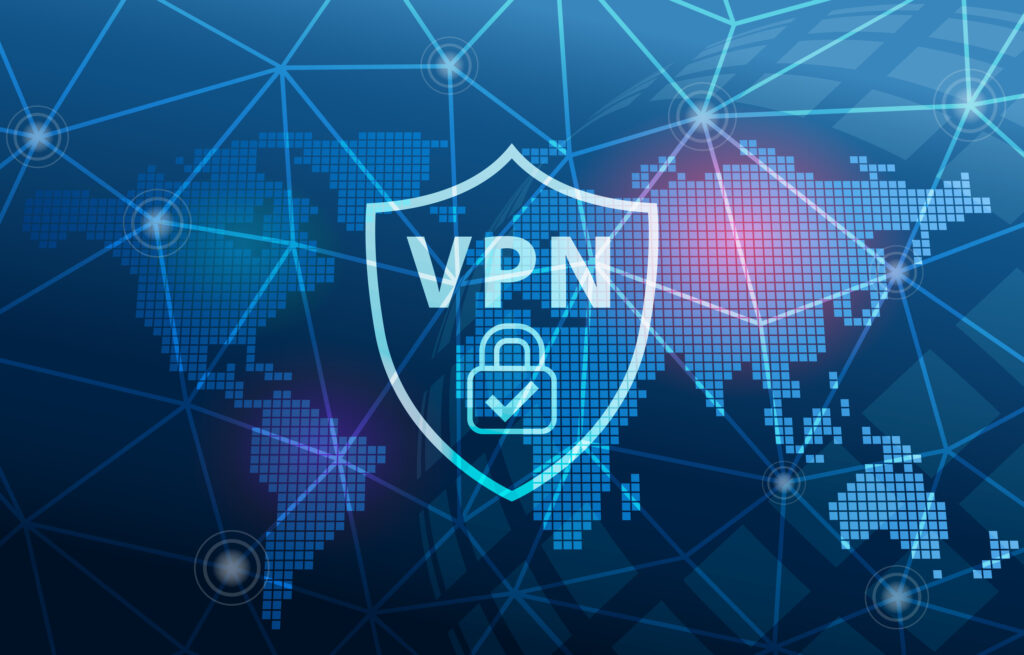Key Takeaways
- Enterprise-Grade to Consumer Tools: There is a massive variety of VPN technologies available in the world today, with some intended for consumer use, and others designed specifically to scale with enterprises and global corporations.
- Enterprise VPNs prioritize security, compliance, and scalability, with features like multi-factor authentication, network segmentation, and integration with cloud infrastructure.
- Enterprise VPN technologies also use robust encryption (e.g., AES-256) and tunneling methods (e.g., SD-WAN) that’s specifically designed to meet regulatory requirements and mandated data protection measures.
- Limitations in Complex Environments: While effective for many use cases, organizations with complex hybrid and multi-cloud infrastructures may benefit from alternative solutions like zero-trust architectures, software-defined perimeter solutions like DxOdyssey, or cloud-native security tools that offer more scalable and granular control over network access and data protection.
What are Virtual Private Networks?
A Virtual Private Network is a technology that creates a secure, encrypted connection over the internet, effectively creating a “private tunnel” between a user’s device and a remote server or network. This tunnel ensures that all data transmitted—such as browsing activity, file transfers, or communications—remains encrypted and protected from interception by third parties, including hackers, cybercriminals, or even internet service providers (ISPs). By routing traffic through a remote server, a VPN also masks the user’s original IP address, enhancing privacy and enabling access to geographically restricted content.
While consumer-focused VPNs are often designed for personal use—such as protecting online anonymity, bypassing censorship, or accessing region-specific streaming services—enterprise-grade VPNs serve a more complex purpose. In corporate environments, enterprise IT teams deploy specialized VPN solutions to securely connect remote employees to internal networks, ensuring that sensitive data (e.g., financial records, customer information, or proprietary systems) remains protected. These enterprise solutions often integrate with advanced security frameworks, such as zero-trust architectures, multi-factor authentication (MFA), and centralized management systems, to enforce strict access controls and compliance with industry regulations (e.g., GDPR, HIPAA).
The technical differences between consumer and enterprise VPNs also extend to protocols, scalability, and performance. Consumer VPNs typically use simpler protocols (e.g., L2TP, PPTP, or OpenVPN) optimized for ease of use, while enterprise solutions may employ more robust protocols like IPSec, SSL/TLS, or SD-WAN-based architectures to support large-scale, high-security operations. Additionally, enterprise VPNs often require configuration through dedicated software or hardware, whereas consumer tools are frequently available as downloadable apps for smartphones, laptops, or browsers.

Key Components of Enterprise VPN Solutions
- Client Software: In enterprise environments, this is often a centralized, managed application integrated with corporate ITsystems. It supports advanced features like multi-factor authentication (MFA), role-based access controls, and compliancewith internal security policies. Unlike consumer tools, enterprise clients are typically deployed via company-issued devices orthrough software distribution platforms.
- VPN Server: Enterprise-grade servers are part of a larger network infrastructure, often hosted in secure data centers orcloud environments. They are configured to handle high volumes of traffic, support multiple users, and integrate with identityand access management (IAM) systems. These servers may also leverage zero-trust architectures to ensure strict accesscontrols.
- Encryption Protocols: Enterprise VPNs use robust, industry-standard protocols like IPSec, SSL/TLS, or IKEv2 to encryptdata. These protocols are designed for scalability, performance, and compliance with regulatory frameworks (e.g., GDPR,HIPAA). Encryption strength (e.g., AES-256) is often tailored to the sensitivity of the data being transmitted.
- Tunneling: Enterprise solutions employ advanced tunneling techniques to secure data across hybrid and multi-cloudenvironments. For example, SD-WAN-based tunneling allows dynamic routing of traffic between on-premises and cloud-based networks, ensuring optimal performance and security.
- Authentication Methods: Enterprise VPNs prioritize multi-factor authentication (MFA), biometrics, and integration withActive Directory or OAuth systems. This ensures that only authorized users and devices can access corporate resources,reducing the risk of unauthorized access.
How a Virtual Private Network Works
- Connection Request: A user or device (e.g., a remote employee’s laptop) initiates a connection to the enterprise VPN server via a secure client application.
- Authentication: The system verifies the user’s identity using MFA, digital certificates, or integration with IAM tools. This step ensures that only authorized individuals can establish a connection.
- Tunnel Creation: A secure, encrypted tunnel is established between the user’s device and the enterprise network. This tunnel is often part of a broader network segmentation strategy to isolate sensitive data.
- Data Encryption: All data transmitted through the tunnel is encrypted using enterprise-grade protocols (e.g., AES-256). This protects sensitive information, such as financial records or intellectual property, from interception.
- Routing: Encrypted data is routed through the enterprise network, which may include internal servers, cloud platforms, or third-party services. The user’s IP address is masked, ensuring anonymity and compliance with privacy regulations.
Common Use Cases
- Secure Remote Work: Enterprise teams rely on VPNs to access internal networks, applications, and databases from remote locations while maintaining compliance with security standards.
- Compliance and Regulatory Requirements: VPNs help organizations meet data protection laws (e.g., GDPR, HIPAA) by encrypting data in transit and enforcing strict access controls.
- Hybrid and Multi-Cloud Access: Enterprise-grade VPNs enable secure connectivity between on-premises infrastructure, public clouds (e.g., AWS, Azure), and private clouds, supporting complex IT environments.
- Device-to-Data Security: By encrypting traffic from endpoints (e.g., laptops, IoT devices), enterprises protect sensitive data from vulnerabilities in unsecured networks.
- Network Segmentation: VPNs are used to isolate critical systems (e.g., financial servers, customer databases) from less secure segments of the network, reducing the attack surface.
Benefits of Using a VPN
- Enhanced Security: Enterprise-grade encryption and authentication mechanisms protect against cyber threats, data breaches, and unauthorized access.
- Compliance and Control: VPNs enable organizations to meet regulatory requirements by ensuring data privacy, audit trails, and granular access controls.
- Scalability: Enterprise solutions are designed to handle large-scale deployments, supporting thousands of users and dynamic workloads.
- Hybrid Cloud Integration: Secure connectivity between on-premises and cloud environments ensures seamless operations and data consistency.
- Centralized Management: IT teams can monitor, update, and enforce security policies across all devices and users through centralized management platforms.

Challenges and Considerations
- Scalability and Performance: Enterprise VPNs must handle high traffic volumes without compromising speed or reliability. This often requires advanced infrastructure, such as SD-WAN or cloud-based solutions.
- Integration with Existing Systems: Enterprise VPNs must work seamlessly with IAM tools, firewalls, and other security systems, requiring careful planning and configuration.
- Compliance and Auditing: Organizations must ensure that their VPN configurations align with industry regulations, which may involve regular audits and updates.
- Complexity of Deployment: Setting up an enterprise-grade VPN requires technical expertise, including network architecture design, protocol selection, and ongoing maintenance.
- Alternative Solutions: For organizations with hybrid and multi-cloud environments, alternatives like zero-trust network access (ZTNA), cloud access security brokers (CASBs), or software-defined perimeter (SDP) may offer more scalable and flexible security models than traditional VPNs.
Conclusion
While virtual private networks remain a cornerstone of enterprise security for specific use cases—such as secure remote access, compliance-driven data protection, and legacy system integration—their limitations in modern, dynamic IT environments are becoming increasingly apparent. As organizations adopt hybrid and multi-cloud infrastructures, the need for more agile, scalable, and granular security solutions is growing. Traditional VPNs, which rely on static, perimeter-based models, often struggle to keep pace with the complexity of today’s distributed networks, where users, devices, and data span on-premises, cloud, and edge environments.
This shift is driving the rise of software-defined perimeter technologies, which offer a more modern, flexible approach to network security. SDPs operate on a zero-trust architecture, dynamically granting access based on user identity, device health, and contextual factors rather than relying on static IP addresses or network boundaries. This model aligns better with the needs of hybrid and multi-cloud environments, reducing the attack surface, improving scalability, and enabling fine-grained access control. While VPNs will continue to serve niche scenarios, the future of enterprise security lies in solutions that adapt to the evolving demands of digital transformation, making SDP and similar technologies a more frequent and strategic replacement for traditional VPNs.
By understanding both the enduring value of VPNs and the emerging potential of next-generation solutions, enterprises can make informed decisions that balance security, compliance, and the agility required for tomorrow’s IT landscape.
DH2i’s DxOdyssey Software-Defined Perimeter provides future-proof network security that can easily be layered on top of any existing infrastructure to replace or enhance your virtual private network(s).

Jump to Topic
FAQ
A VPN creates a secure, encrypted tunnel between a user and a corporate network, often relying on static IP addresses and perimeter-based security. In contrast, a Software-Defined Perimeter (SDP) operates on a zero-trust model, dynamically granting access based on user identity, device health, and contextual factors (e.g., location, time of day). SDP eliminates the need for static IP addresses and reduces the attack surface by only exposing services to authenticated users, making it more adaptable to hybrid and multi-cloud environments. While VPNs remain useful for legacy systems, SDP offers greater scalability and security for modern, distributed infrastructures.
Traditional enterprise VPNs are still ideal for legacy systems, on-premises applications, or regulatory environments that require strict data sovereignty. They provide a proven, consistent method for securing remote access to internal networks, especially when integrating with older infrastructure or compliance frameworks (e.g., HIPAA, GDPR). However, for organizations with hybrid and multi-cloud architectures, newer solutions like SDP or cloud-native security tools may offer more flexibility and granular control. The choice depends on the specific security, compliance, and operational needs of the organization.
Encryption is the foundation of enterprise-grade VPN security, ensuring data confidentiality and integrity during transmission. Modern enterprise VPNs use robust protocols like AES-256 and IPSec to protect sensitive data. However, the demand for quantum-resistant encryption and dynamic key management is growing as threats evolve. Additionally, integration with zero-trust architectures and cloud security gateways is reshaping how encryption is applied, moving beyond static tunnels to adaptive, context-aware protection.
Traditional enterprise VPNs were designed for on-premises networks and may struggle to scale effectively in hybrid and multi-cloud environments due to their reliance on static IP addresses and perimeter-based models. However, modern SD-WAN-enabled or cloud-native VPN solutions can bridge this gap by dynamically routing traffic across on-premises, private, and public cloud infrastructures. These advanced solutions provide seamless connectivity, enhanced performance, and centralized management, making them better suited for today’s distributed IT ecosystems.
Enterprises can adopt a hybrid approach, using VPNs for legacy systems and SDP for modern, cloud-first workloads. This allows organizations to leverage the reliability of traditional VPNs while embracing the agility and security of SDP for dynamic environments. By integrating zero-trust principles, micro-segmentation, and cloud-native security tools, enterprises can create a layered defense that addresses both historical and emerging threats. The key is to evaluate each use case based on compliance requirements, user needs, and technical maturity of the infrastructure.

